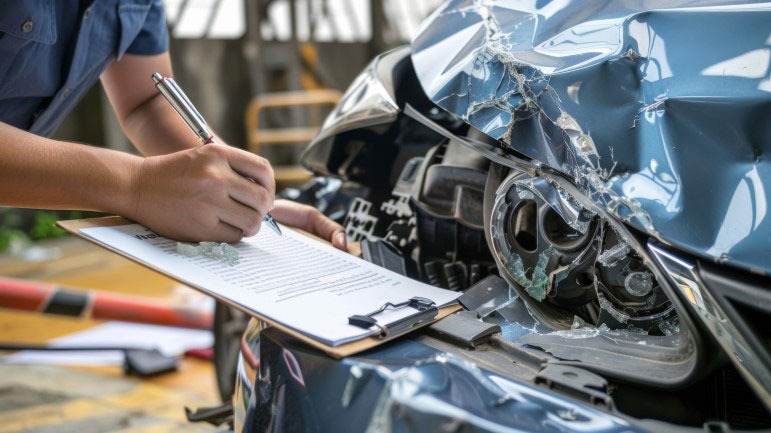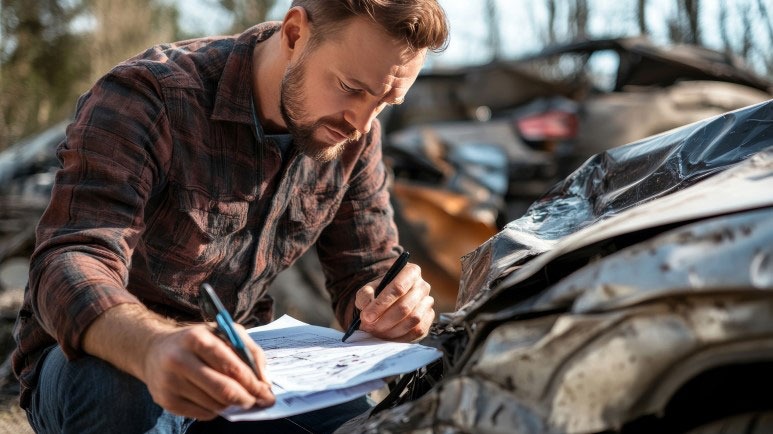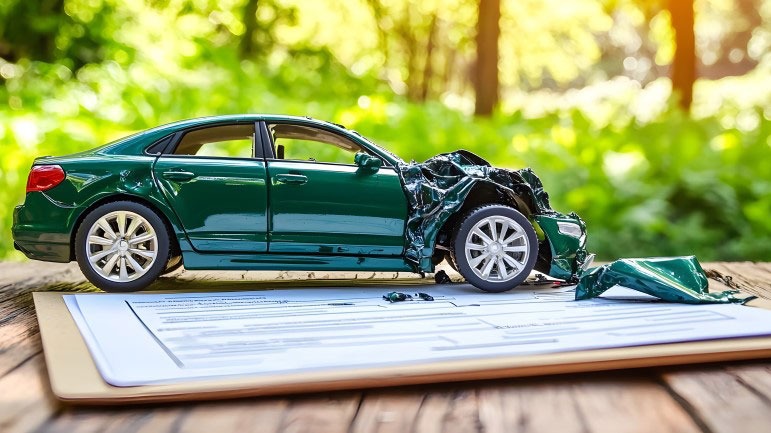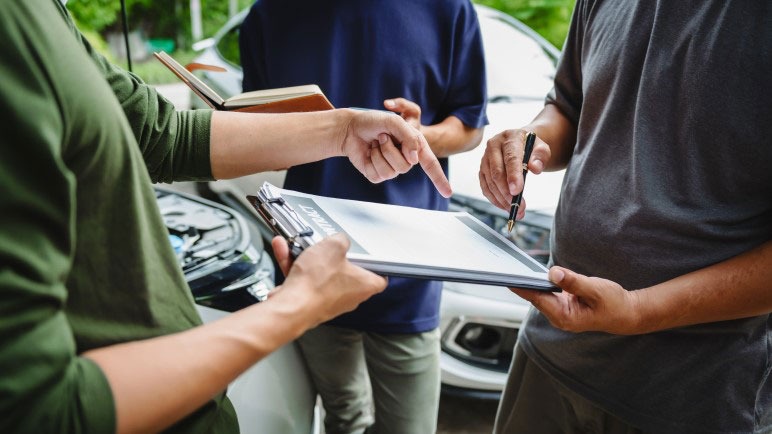Did you know that nearly 1 in 8 drivers will file an auto insurance claim this year? If you’re involved in a car accident, understanding how to navigate auto insurance claims efficiently can make the difference between a smooth, stress-free experience and a prolonged, frustrating ordeal. This in-depth guide is your trusted resource for minimizing hassle, maximizing settlement, and regaining control after a car accident. Let’s equip you with confidence and clarity so you’re not caught off guard when it matters most.Understanding Why It’s Critical to Navigate Auto Insurance Claims Efficiently The importance of efficiently navigating auto insurance claims and understanding the claims process cannot be overstated for every car accident victim. Every year, millions of motorists are involved in car accidents or incidents that necessitate using their auto insurance. If the insurance claims process feels overwhelming, you’re not alone—but having a clear system to follow can help protect your financial wellbeing and ensure you receive the compensation you’re entitled to.When you navigate auto insurance claims with confidence, you avoid common pitfalls that lead to delays, under-compensation, or outright denials from your insurance provider . A well-managed claim provides peace of mind during a stressful situation, helps bypass frustrating phone calls and paperwork, and often leads to a faster resolution with your insurance company . Ultimately, being prepared empowers you to get back on the road and back to normal life with minimal disruption.A recent report reveals that nearly 1 in 8 drivers will file an auto insurance claim this year—are you prepared? This guide will empower you to confidently navigate auto insurance claims, minimize hassles, and maximize your settlement.Essential Steps to Navigate Auto Insurance Claims Following a Car AccidentImmediate Actions After a Car Accident: Collecting Evidence at the Scene The moments immediately following a car accident are crucial for gathering evidence at the scene and building a strong foundation for your auto insurance claim . Start by ensuring safety—move vehicles to a secure location if possible and check for injuries. Document the scene of the accident : take clear photographs of all vehicles, any visible injuries, license plates, and surrounding conditions. Use your smartphone or camera to capture damage to your car, skid marks, glass debris, and property damage.Collect witness statements from anyone who saw the accident. Ask for their contact information; their accounts can support your claim if there are conflicting stories. Most critically, request law enforcement to file a detailed police report . The officer’s neutral documentation is often the most compelling evidence when negotiating with your insurance company . Remember, thorough evidence at the scene will expedite the claims process and reduce disputes about fault or extent of damage later on.Take clear photos, collect witness statements, and ensure a detailed police report is filed to strengthen your auto insurance claim with solid evidence at the scene.Contacting Your Car Insurance Provider QuicklyOne of the most effective ways to streamline the auto insurance claims process is to notify your insurance company promptly after the car accident. Prompt notification not only protects your insurance coverage but also demonstrates your commitment to following your insurance policy guidelines. Most insurers have 24/7 hotlines or mobile apps that allow you to start a claim within minutes.Early communication allows the insurance provider to begin evidence gathering, assign an adjuster, and clarify what steps you should take next. Waiting too long could result in complications, lapses in coverage, or suspicions about the validity of your claim. The sooner you contact your car insurance , the sooner your claims process can move forward—potentially reducing your out-of-pocket repair costs and helping you get back behind the wheel.Why prompt notification helps streamline the claims process and supports your insurance cover.As you work through the claims process, understanding how your vehicle will be evaluated is essential—especially if the damage is extensive. For a deeper look at what happens when your car is considered a total loss and how appraisals are handled, explore the total loss car appraisal process and next steps to ensure you’re fully prepared for every scenario.Understanding the Claims Process: What to Expect from Your Insurance CompanyOnce you initiate your auto insurance claim , your insurance company will guide you through a series of steps designed to assess liability, estimate repair costs, and ultimately settle your claim. Typically, you’ll work with a dedicated claims adjuster who will contact you for more information, review your documents, and may even inspect your vehicle in person.During this phase, it’s important to respond promptly to requests for additional information and to keep all communications and paperwork organized in a detailed record . Understanding the typical flow—filing, documentation, claim review, negotiation, and settlement—can help you better manage expectations and keep your case on track. With the right approach, your insurance provider becomes an ally in restoring your loss, rather than an obstacle.How Insurance Claims Process Works for Auto InsuranceFiling an Insurance Claim Step-by-StepContact your insurance companySubmit required documentsWork with assigned adjustersObtain repair estimatesAccept settlementThe process of filing an insurance claim should start as soon as possible after the incident. Contact your insurance company directly—either through their mobile app, website, or phone hotline. Be ready with your policy number, details about the car accident, and all collected evidence at the scene. You’ll need to submit required documents like the police report, photographs, and any witness contact information.After initiating your claim, an adjuster will be assigned by the insurance company . This professional will act as your main point of contact, evaluating the extent of the damage and requesting additional information. Obtain repair estimates from trusted repair shops to support your claim—sometimes your insurance provider will have preferred partners. By law you can choose where to get your vehicle repaired. Once all documentation is reviewed, your insurance company will present a settlement for your approval. Knowing each stage helps ensure you’re prepared and assertive during negotiations.How Your Insurance Provider Investigates Your Claim After you file a claim, the insurance company launches an investigation to assess the validity and value of your claim. This process often begins with the claims adjuster reviewing your documents—especially the police report and photographic evidence. The adjuster may ask clarifying questions, visit the repair shop to personally assess the damage to your car, or arrange for an independent expert review if injury or liability is disputed.Their goal is to establish fault, ensure the scope of damage matches your report, and verify that your losses are covered by your insurance policy . By being responsive and transparent, you expedite the adjuster’s work and improve your chances of a successful settlement. Quality evidence at the scene and honest cooperation with your insurance company will minimize the risk of disputes and delays in the claims process .Role of insurance companies, evaluation of evidence, and expert assessments for an auto insurance claim.Common Delays in the Insurance Claims Process and Tips to Avoid ThemEven the most straightforward auto insurance claim can encounter obstacles. Common delays include missing or inaccurate documentation (like an incomplete police report), unresponsive witnesses, or slow replies to adjuster inquiries. To avoid delays, file your claim promptly, keep all records organized, and follow up with your insurance provider . Don’t assume the process is progressing—proactive communication is key.Another frequent holdup is disagreement over repair costs between your chosen repair shop and the insurer’s assessors. Resolve these disputes by requesting detailed line-item estimates and seeking clarification from both parties. By responding quickly and thoroughly to every request and double-checking every form before submission, you keep your claim moving smoothly toward settlement.We'll Help You Navigate Your Insurance Claim.We work with every major carrier of insurance. We are experts at dealing with your insurance claim. Every company handles claims differently. Please Call Us to discuss it and we can answer any question you may have about the claims process.What Documentation Do You Need to Navigate Auto Insurance Claims?Navigating the auto insurance claims process efficiently hinges on having accurate, organized documentation. Every insurance provider and policy may differ, but most insurance companies require similar essential paperwork. A detailed record is invaluable—missing documents are a top reason for claim denials or delays. Ensure you keep all paperwork together, preferably in both digital and physical formats.Essential documents: Police report, photos of the car accident, repair bills, medical records for personal injury, witness statements, proof of insurance cover.Why Accurate Documentation Accelerates Your Auto Insurance Claim"Having organized records is often the difference between a fast resolution and frustrating delays." — Claims Manager, Major Insurance ProviderSubmitting thorough, well-organized documentation allows your insurance company to process your claim more efficiently. Records like the police report , clear accident photos, and repair shop estimates establish credibility. For personal injury claims, submit all medical records, bills, and doctor’s notes quickly. Remember: if documentation is missing or unclear, you may be asked to start from scratch, delaying the entire auto insurance claims process .Stay ahead by creating a checklist of required documents—even before you file a claim . Double-check for legibility, correct information, and supporting evidence. This practice not only accelerates processing but empowers you to confidently challenge disputes or denials with proof in hand.Insurance Cover: What Is and Isn’t Included in Your Auto Insurance ClaimTypes of Claims and Coverage in Auto InsuranceIncident TypeCoverage TypeCommon ExclusionsDocumentation RequiredCollisionComprehensiveMechanical breakdownRepair invoices, Police reportTheftTheft coverageUnattended vehiclePolice report, ReceiptsPersonal InjuryPIP/MedPayUntreated injuriesMedical records, BillsNot all losses are covered by every insurance policy . Understanding your insurance cover is crucial before and after a car accident. For instance, collision coverage pays for damage to your car after an accident regardless of fault, while comprehensive covers theft or non-collision incidents. Each has specific exclusions, so review your insurance policy documents and ask your insurance provider for clarification if needed.Failure to provide the correct documentation—like a police report for theft—can result in claim rejection. Knowing what’s covered and excluded under your contract helps you know when to file a claim and how to ensure you receive the full benefit of your auto insurance.Communicating Effectively with Insurance Companies During Your ClaimBest Practices: Providing Updates and Responses Open and timely communication with your insurance company is fundamental to advancing your insurance claim and ensuring a smooth claims process . Respond to all inquiries from your claims adjuster within 24-48 hours. Always reference your claim number in communications, whether by email or phone, and keep a log of all correspondence. Regular updates, even to confirm you haven’t forgotten a request, go a long way in fostering cooperation from your insurance provider .Consistency and clarity matter—if you’re awaiting a repair estimate or gathering new evidence, let your adjuster know your timeline. Failure to communicate can result in your claim being shelved or even denied due to inactivity. By practicing these habits, you maintain momentum and demonstrate diligence, positioning your auto insurance claim for a prompt resolution.Dealing with Disputes: What If You Disagree with the Insurance Company Decision?It’s not uncommon to disagree with your insurance company about settlement amounts or claim denials. If you feel an offer is insufficient—perhaps the repair shop estimate is higher or your injuries aren’t fully compensated—request a detailed breakdown of their calculations. Gather additional evidence from the repair shop , medical professionals, or independent adjusters to dispute discrepancies.Appeals are a standard part of the claims process . Escalate your concerns by requesting a second review or involve state insurance regulators if necessary. Consulting a legal or insurance expert may also be worthwhile in complex cases. Remember, persistence and professionalism are powerful allies in ensuring you receive what your insurance policy promises.We work with every major carrier of insurance. We are experts at dealing with your insurance claim. Every company handles claims differently. Please call us at (630) 852-3578 to discuss it and we can answer any question you may have about the claims process.When and How to File a Claim for Maximum CoverageShould You File an Insurance Claim If You Are Not at Fault?Analyze situations when it’s best to file (even if the car accident wasn’t your fault) and the effect on premiums. If you’re not at fault in a car accident , it’s usually wise to file a claim with your own auto insurance —especially if the at-fault driver is uninsured or under-insured, or if there’s any dispute about fault. This ensures repairs begin fast and your rights are protected. In cases where the other party’s insurer is slow to respond or disputes responsibility, your car insurance company can sometimes subrogate the claim (seek reimbursement from the at-fault party) after paying you.However, be aware that even not-at-fault claims may affect your premiums, depending on your provider’s policies and state rules. Always weigh the cost of your deductible, potential rate increases, and the size of the claim before proceeding. Knowing your insurance cover in advance gives you the power to make a well-informed decision.Scenarios Where It’s Better Not to File a ClaimThere are times when filing an insurance claim isn’t your best option—for example, if repair costs are less than your deductible or if the damage is minor and can be handled privately with the other driver. Multiple claims within a short period can raise your rates or even impact your eligibility with some insurance companies . In such cases, paying out-of-pocket may save money in the long term.Additionally, filing a small claim may not move the needle for your out-of-pocket expenses but could trigger rate hikes or strained relations with your insurance provider . Always consult your policy’s guidelines and, when in doubt, seek advice from a trusted insurance company representative. Your goal is to maximize your benefits without unnecessary costs.Personal Injury and Auto Insurance Claims: What You Should KnowMedical bills coverage, timelines for reporting injury claims, coordinating with personal health insurance, supporting documentationPersonal injury claims can complicate the auto insurance claims process considerably, requiring timely reporting and thorough documentation. If you or a passenger are hurt, report the injury to both your insurance provider and medical personnel as soon as possible. Most car insurance policies include PIP (Personal Injury Protection) or MedPay, which cover medical bills regardless of fault. Keep all medical records, billing statements, and physicians’ reports well organized.Timeliness is crucial—most policies require reporting injuries within specific deadlines, often as brief as 24–72 hours from the accident. If your personal health insurance also applies, coordinate both claims for maximum reimbursement. Accurate, prompt documentation not only speeds processing, but strengthens your position if disputes arise over claim validity or extent of injuries.How Insurance Providers Settle Auto Insurance ClaimsUnderstanding the Settlement Process and Negotiating for a Fair Payout Once your claim is approved, the focus shifts to settling for a fair amount. The claims adjuster will review repair shop estimates, medical bills, and other documentation to make an initial offer. This is not always the final word—if you feel the settlement doesn’t cover your losses, you have the right to negotiate. Provide additional estimates and supporting evidence to make your case.Remember, settlement is a negotiation. Don’t be afraid to ask questions about how your payout was calculated or to present your own numbers. Persistence and diplomacy often lead to improved offers. Having a trusted professional or legal adviser in your corner can further strengthen your position, especially for complex or high-value claims.Common Reasons for Claim Denial and How to AppealInsurance claims are often denied due to lack of coverage, missing or incomplete documentation like the police report, late submission, or disputes over fault. If you receive a denial letter, carefully review the reasons given by your insurance company . Gather additional evidence, correct documentation errors, and submit a written appeal detailing your case. Many disputes are resolved during the appeal stage—don’t assume a denial is the final answer.If your appeal fails, contact your state insurance commissioner for assistance. Checking the insurance policy fine print, adhering to all timelines, and using professional guidance can turn a denial into an approval—ensuring you ultimately receive the compensation you deserve.People Also Ask: How to Navigate the Insurance Claims Process?To navigate the insurance claims process, document all accident details, contact your insurance company immediately, keep records organized, communicate regularly, and respond promptly to adjuster inquiries.Feeling overwhelmed or unheard?We work with every major carrier of insurance. Please call us to discuss it and we can answer any question you may have about the claims process. (630) 852-3578People Also Ask: How to Look Up Car Insurance Claims?You can look up car insurance claims by contacting your insurance provider for a claims history or accessing your CLUE (Comprehensive Loss Underwriting Exchange) report online.People Also Ask: Should I File an Insurance Claim if I Am Not at Fault?Filing an insurance claim when not at fault is often recommended to ensure repairs are covered and your rights protected, though it may affect future premiums.People Also Ask: Can You Keep the Insurance Money If Someone Hits Your Car?If your settlement exceeds repair costs or you decide not to repair your car, you can typically keep the leftover insurance money. Always check your insurance provider’s policies and local laws.FAQs: Navigate Auto Insurance ClaimsWhat if the other driver is uninsured? If the other party is uninsured or under-insured, your own policy may include uninsured motorist coverage to help pay for damage and medical bills. Always check your insurance policy for this provision.How long does the insurance claims process usually take? The claims process length varies, but most are resolved within a few weeks of filing. More complex cases, especially involving personal injury or disputes, may take longer. Good communication can help speed things up.How does filing a car accident affect your rates? Filing a claim, even for a not-at-fault car accident, can impact your premiums depending on your insurance provider and claim history. Ask your agent to clarify before proceeding.When might it be wise to hire a claims adjuster or lawyer? If your claim is especially large, complicated, involves serious injury, or results in disputes with your insurer, bringing in a public adjuster or attorney can ensure you receive the best possible settlement.Expert Tips to Navigate Auto Insurance Claims with ConfidenceDocument everythingCommunicate promptly with all partiesReview your insurance cover in advanceSeek professional advice for complex casesPersist with appeals if necessaryKey Takeaways for Navigating Auto Insurance Claims with Less StressAct fast after a car accidentKeep documents organized and accurateKnow your insurance cover and policy detailsCommunicate regularly with insurance companiesUnderstand your settlement and appeal rightsTake Control: Start Navigating Your Auto Insurance Claims ConfidentlyFollow the steps above to navigate auto insurance claims, reduce stress, and get the coverage you deserve.We'll help you navigate your insurance claim and restore your vehicle to pre-loss condition. Don't stress! Just come see us.ConclusionBy staying organized, informed, and proactive, you can take control of your auto insurance claims and recover quickly with the fair settlement you deserve.




 Add Row
Add Row  Add
Add 


Write A Comment